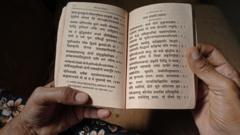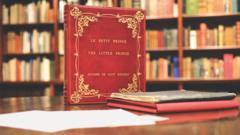In a captivating turn of events, scholars are redefining the narrative surrounding William Shakespeare’s marriage to Anne Hathaway, highlighting the significance of a long-forgotten letter. Traditionally viewed as a distant husband who abandoned his family for literary pursuits in London, new insights now suggest a deeper connection between the playwright and his wife.
Shakespeare wed Anne in 1582 when he was just 18, and she was in her mid-20s and pregnant. For years, many believed he escaped domestic obligations, as underscored by a 19th-century writer who depicted Hathaway as an “encumbrance.” This viewpoint was perpetuated by the notable detail in his will, which famously left her only his “second best bed.” However, literature professor Matthew Steggle’s forthcoming study, set to be released in the journal Shakespeare, challenges this narrative.
At the heart of Steggle's research lies a 17th-century letter fragment that addresses "Mrs. Shakspaire," discovered within the binding of a book from 1608. Although this letter was initially acknowledged by an amateur historian in 1978, it received little attention until recent technological advancements allowed researchers to connect the contents with those of Shakespeare’s actual life.
Steggle expressed surprise over the lack of interest in the letter, particularly since it includes what appears to be a reply from Anne, revealing a more engaged partnership than previously posited. As he worked on a biography of Shakespeare, the new findings have prompted a reconsideration of the playwright’s domestic life and his relationship with Anne, suggesting they were much more intertwined than the dismissive portrayals of the past.















